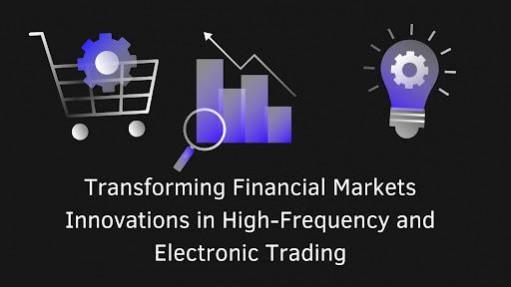
In a rapidly evolving digital landscape, trading infrastructure has undergone a significant transformation, reshaping financial markets. As an expert in high-frequency low latency electronic trading systems, Ganesh Marimuthu explores cutting-edge innovations defining the future of trading. His work delves into key advancements such as FPGA-based processing, cloud computing integration, and AI-driven market analytics, all of which enhance efficiency and transparency.
Pushing the Boundaries of Speed and Efficiency
Modern high-frequency trading (HFT) relies on ultra-low latency networks and optimized data transmission. Advanced fiber optics and microwave networks enable microsecond trade execution. Wavelength division multiplexing enhances data speed, while co-location facilities position trading servers near exchange centers, minimizing delays and ensuring optimal execution for maximum market efficiency.
FPGA Technology: Revolutionizing Trading Systems
Field-programmable gate Arrays (FPGAs) have emerged as game-changers in trading infrastructure. These specialized hardware accelerators enable high-speed data processing with latencies measured in nanoseconds. Unlike conventional CPU-based systems, FPGA-driven trading engines execute complex calculations in parallel, significantly improving performance.
Cloud Computing: A New Era of Scalability and Flexibility
Cloud computing has transformed trading infrastructure, enhancing data analysis and scalability. Firms leverage distributed computing clusters for vast historical data processing, refining predictive models and backtesting strategies. Hybrid architectures blend on-premises and cloud systems, optimizing resource allocation and cost efficiency.
The Role of AI and Quantum computing in Trading
The future of High-Frequency Trading (HFT) lies in quantum computing and AI-driven innovations. Quantum algorithms can process vast datasets exponentially faster, optimizing trade execution, portfolio management, and risk assessment. AI enhances predictive analytics, detecting market patterns and anomalies in real time.
Market Structure Evolution in Treasury Trading
The American Treasury market has shifted towards electronic trading, with automation driving higher liquidity and improved price discovery. Integrating Artificial Intelligence (AI) and Quantum Computing (QC) in High-Frequency Trading (HFT) requires a multi-layered approach combining cutting-edge infrastructure, algorithmic advancements, and hardware optimization.
1. Quantum Computing for Complex Computations
Quantum computing can process vast datasets exponentially faster than classical systems, making it ideal for HFT applications such as: Risk Modeling: Quantum Monte Carlo simulations enhance Value at Risk (VaR) and DV01 calculations. Portfolio Optimization: Quantum Approximate Optimization Algorithm (QAOA) optimizes asset allocation. Derivative Pricing: Quantum Fourier Transform speeds up pricing models for options and structured products.
2. AI-Driven Predictive Analytics
AI enhances HFT by leveraging deep learning and reinforcement learning for:Market Signal Detection: Analyzing real-time order book data to predict price movements. Algorithmic Trading Strategies: AI fine-tunes execution strategies by adapting to market conditions.Liquidity Forecasting: Machine learning models predict bid-ask spreads and order flow dynamics.
Regulatory Challenges and Compliance Innovations
As trading systems evolve, regulatory frameworks continue to adapt, ensuring market stability and security. Advanced compliance solutions, including real-time trade monitoring and automated risk assessments, help firms meet stringent reporting requirements. Pre-trade risk checks, executed within microseconds, prevent erroneous transactions and enhance market resilience.
Future Innovations: Quantum Computing and Blockchain Integration
Emerging technologies such as quantum computing and blockchain are poised to redefine trading paradigms. Quantum algorithms offer the potential to solve complex financial calculations exponentially faster than traditional computing methods. Blockchain's decentralized ledgers could revolutionize trade settlements, reducing counterparty risks and improving transactional efficiency. As these technologies mature, they are expected to optimize high-frequency trading and market operations further.
In conclusion, Ganesh Marimuthu highlights how the rapid advancements in high-frequency trading infrastructure, AI-driven analytics, and cloud computing are shaping the future of financial markets. While these innovations bring new opportunities, they also present challenges in data management, regulatory compliance, and system resilience. Integrating cutting-edge technologies will be essential in maintaining efficient, transparent, and secure trading environments as the industry moves forward.
















